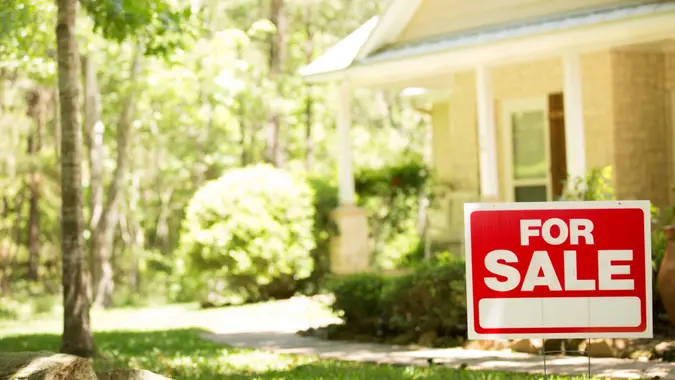5 Risky Homebuying Trends To Avoid in 2026, According to George Kamel

Commitment to Our Readers
GOBankingRates' editorial team is committed to bringing you unbiased reviews and information. We use data-driven methodologies to evaluate financial products and services - our reviews and ratings are not influenced by advertisers. You can read more about our editorial guidelines and our products and services review methodology.

20 Years
Helping You Live Richer

Reviewed
by Experts

Trusted by
Millions of Readers
With the median U.S. home priced at over $400,000 and mortgage rates hovering around 6.5%, many first-time homebuyers are looking for nontraditional ways to buy a home. However, many of these popular “shortcuts” are terrible for your finances, money expert George Kamel said in a recent YouTube video.
Here’s a look at five dangerous homebuying trends that you should avoid.
1. Zero-Down Loans
Some mortgage loans allow you to purchase a home with no down payment. While this can save you money upfront, it ends up being more costly in the long run.
“You have zero equity in your home from day one,” Kamel said. “You’ll also have higher monthly payments because you’re financing the entire purchase price. Plus, you’ll have to pay for private mortgage insurance, aka PMI, which protects the lender because they see you as a risky borrower.”
These types of loans can also be disastrous if the value of your home decreases.
“If the market turns and home values drop even slightly, you’ll be underwater on your mortgage,” Kamel said. “You’ll owe more than the house is worth, so until the value goes back up, you won’t be able to sell without writing a check — on top of all the fees.”
In addition to avoiding zero-down-payment loans, Kamel recommended avoiding any loan with a low to no down payment, including government loans like FHA loans, VA loans and USDA loans.
“I get that these government programs exist to help people, but between the restrictions they have, the additional fees and often higher interest rates, they are a wolf in sheep’s clothing,” Kamel said.
2. Co-Signing With Parents or Friends
Some homebuyers who can’t afford a home on their own are co-signing on a mortgage loan with family members or friends — but Kamel advised against this.
“Unless you’re looking for a complicated way to destroy a relationship with someone you love, please don’t do this,” he said. “When someone like your mom or your dad co-signs your loan, they are legally responsible for that debt. … Do you really want to cause chaos for your family because you bought more house than you could afford?”
3. Taking Out a Mortgage for the Maximum Amount
Lenders will typically approve you for a higher mortgage than you can realistically afford.
“The more money they loan you, the more money they make,” Kamel said. “They don’t really care if you’re house poor for the next 30 years.”
When you max out your mortgage approval, you leave zero room in your budget for unforeseen or additional costs like home repairs and maintenance, job loss, having kids and unexpected medical bills. Plus, your mortgage payment can go up over time, even with a fixed-rate mortgage.
“Your monthly mortgage payment typically includes things like property taxes and homeowner’s insurance, and if either one of those goes up, so does your payment,” Kamel said. “A recent report found that over the past three years, homeowners saw their insurance premiums increase by an average of 24%.”
4. Relying on a Tenant To Pay Your Mortgage
Purchasing a multifamily property to collect rental income can be a huge financial help — but you shouldn’t be reliant on this income to pay your mortgage.
“That’s playing with fire, because what happens when your tenant moves out, or what if they stop paying rent?” Kamel said. “And what if rental regulations change in your area, and you can’t charge what you thought you could? If you can’t afford the mortgage without rental income, you can’t afford the house, period.”
5. Creative Financing
Creative financing includes things like seller financing, rent-to-own agreements and adjustable-rate mortgages (ARMs).
“These often have hidden fees, balloon payments and higher interest over time,” Kamel said.
Another example would be assumable mortgages, which involve taking over someone else’s low-rate mortgage.
“These are actually real, but they’re not at all common, and they’re nearly impossible to pull off in reality,” Kamel said.
Instead of relying on these risky homebuying trends, stick to traditional, proven methods to protect your financial future.
More From GOBankingRates
 Written by
Written by  Edited by
Edited by 

























